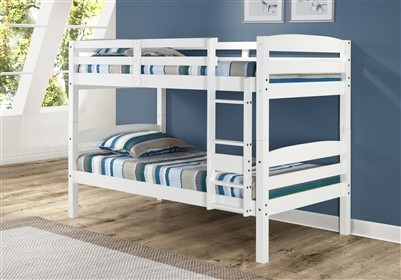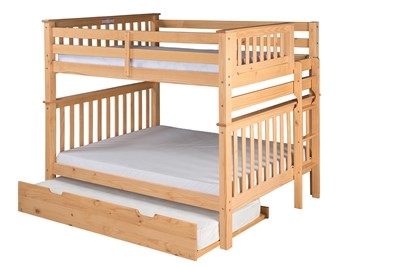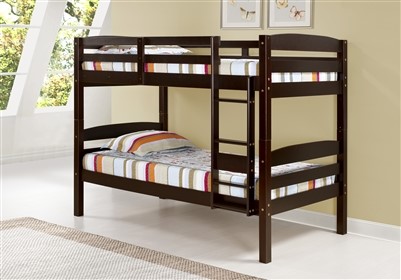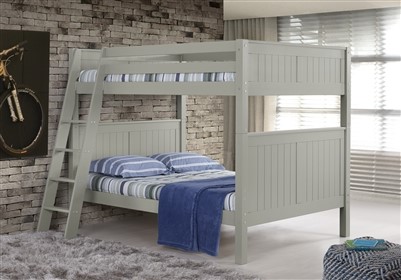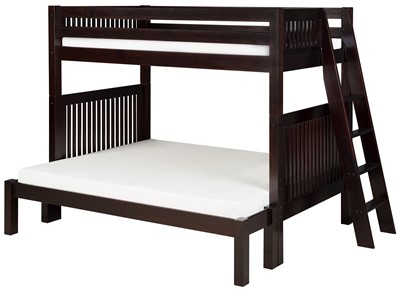|
Bunk Bed Safety Buying Guide
Kids love bunk beds and they are a smart way to maximize floor space, but bunk beds do come with some risks. Every year, an average of 35,790 children are sent to the ER with bunk bed related injuries. The unfortunate part is that many of these injures are preventable. While this may seem daunting, there are several things you can do to help minimize your child’s risk. In this bunk bed safety buying guide, we’ll show you how you can prevent bunk bed injuries and keep your child safe. Bunk bed safety standards
Faulty bunk bed construction is one of the causes of bunk bed injuries. Although all new bunk beds sold in America are required to follow strict safety standards from the U.S. Consumer Product Safety Commission (CPSC), older bunk beds may not meet these standards. While it can be tempting to buy an older bunk bed to save some money, the consequences can be fatal. The current safety standards include guidelines on guardrails, openings, testing, and certification. Older bunk beds which don’t follow these standards can lead to entrapment. ASTM standards for bunk bed safety are another standard to look for. These are voluntary standards which go above and beyond the basic safety requirements. The ASTM standards help minimize the risk of falls from the top bunk as well as address the structural integrity of the support system. To ensure the bunk bed you choose follows the CPSC guidelines, make sure it is manufactured after 2008. For maximum protection, opt for a bed which meets the ASTM voluntary standards. All of our beds at Planet Bunk Bed meet both the CPSC requirements and the ASTM voluntary standards. Find out more about Planet Bunk Bed’s commitment to safety. The right bunk bed height
When you’re buying a bunk bed for your child, make sure to leave at least two feet of space between the top of the bunk bed and your ceiling. With the average bunk bed height ranging from 5 ½ to 6 feet, this can often be challenging in rooms with low ceilings. Low bunk beds are a smart solution. These beds are typically less than 5 feet tall and are a safer option for younger children. Bunk bed ladder safety
When you’re looking at bunk beds for your child, you’ll want to make sure the bed has a ladder which allows your child to safely access the top bunk. Angled ladders (as the name suggest) have a slight angle while the traditional vertical ladders don’t. This type of ladder does take up more space than a standard vertical ladder, but it makes it much easier and is safer for younger children to get on the top bunk. Regardless of the type of ladder you choose, look for one with durable, extra wide steps for maximum protection from slips and falls. Safe bunk bed set up and use
Once you find the bunk bed that’s right for your child, it’s just as important to ensure it’s installed correctly and put some basic safety rules in place. Follow the manufacturer’s instructions & recommendationsThe bunk bed you get will come with instructions. Follow the instructions and recommendations when setting up and using the bunk bed to prevent your child from getting injured.
Place your child’s bunk bed is a safe locationWhere you place your child’s bunk bed matters. Follow these bunk bed placement guidelines to keep your child safe.
More bunk bed safety tipsAs a parent, we know you want to do everything you can to protect your child. Here are some additional things you can do to keep your child safe.
Final bunk bed safety considerationsMost of the bunk bed injuries that occur are entirely preventable. Use the information in this bunk bed safety guide as a resource and make sure the bunk bed you choose meets or exceeds required safety standards to keep your child safe. Check out our top-quality bunk beds for your child’s room.
Sources: http://pediatrics.aappublications.org |
